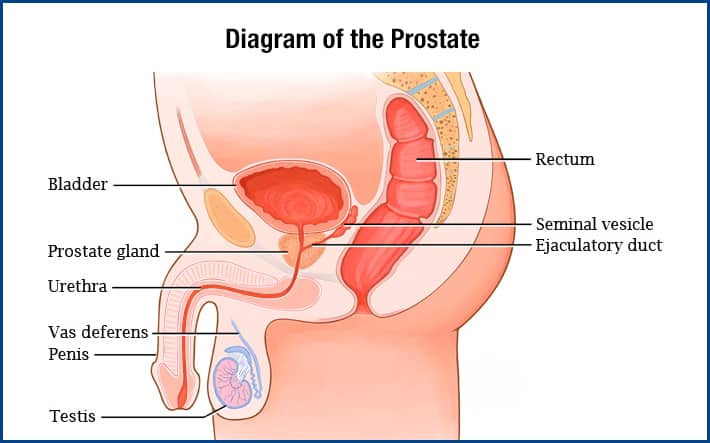Prostate cancer: symptoms, causes, treatment
In this article we will describe 10 prostate cancer facts, and its symptoms, causes, and treatment.
1. Common cancer in men
Prostate cancer is the second most common cancer in men worldwide, after skin cancer. It primarily affects older men, with the average age of diagnosis being around 65 years.
It affects 1 in 8 men, and 1 in 4 Black men.
2. Prostate gland
The prostate gland is a small walnut-sized organ located below the bladder and in front of the rectum. It produces seminal fluid that nourishes and transports sperm.

3. Risk factors
Age is the most significant risk factor for prostate cancer. Other risk factors include family history, certain genetic mutations, and race (as stated above).
4. Early detection
Early prostate cancer often does not cause symptoms. The benefit of screening (‘looking for’ prostate cancer in patients that are not known to have it) is unclear. In some patients, regular screening with a blood test called prostate-specific antigen (PSA) can help with early detection.
5. Slow growth
Prostate cancer usually grows slowly, and many men with the disease do not experience symptoms or develop life-threatening forms of the cancer. They will die with it rather than from it.
6. Treatment options
Treatment options for prostate cancer vary depending on factors like the stage and aggressiveness of the cancer, as well as the patient’s overall health. Treatment options can include active surveillance, surgery, radiation therapy, hormone therapy, chemotherapy, and immunotherapy.
7. Gleason Score
Prostate cancers are graded using the Gleason score, which helps determine how aggressive the cancer is. A prostate biopsy is done by a urologist (hospital urinary tract surgeon). And the score is based on how the cancer cells look under a microscope.
A doctor called a pathologist looks at how the cancer cells are arranged in the prostate, and assigns a score on a scale of 3 to 5 from 2 different locations on the biopsy. The doctor then gives each area a score from 3 to 5. The scores are added together to come up with an overall score between 6 and 10.
Overall, Gleason scores of 5 or lower are not used. The lowest Gleason score is 6, which is a low-grade cancer. A Gleason score of 7 is a medium-grade cancer, and a score of 8, 9, or 10 is a high-grade cancer. A lower-grade cancer grows more slowly and is less likely to spread than a high-grade cancer.
8. Metastasis
If prostate cancer spreads beyond the prostate gland, it can metastasise (spread to) to other parts of the body, such as bones, lymph nodes, or other organs. This advanced stage of prostate cancer is more challenging to treat.
9. Survival rates
The survival rates for prostate cancer are generally good, particularly for localised or early-stage cancers. The 5-year survival rate for localised prostate cancer is around 98%.
10. Lifestyle factors
Maintaining a healthy lifestyle can help reduce the risk of developing prostate cancer. This includes staying physically active, maintaining a balanced diet rich in fruits and vegetables, and avoiding excessive alcohol consumption.
Note. It is important to be seen by a urologist (hospital surgeon) for assessment (soon) if prostate cancer is suspected.
Summary
We have described prostate cancer, and its symptoms, causes, and treatment. We hope it has been helpful.
Last Reviewed on 16 July 2024
